|
Helen Colling was introduced to needlework at an early age and was encouraged by her City & Guilds tutor to apply for a 3 year Stitched Textile Diploma with Jan Beaney & Jean Littlejohn. During the drawing module she explored transparency – looking through glass doors, reflections, shadows and layers. The topic for her final piece was the atmosphere after something has gone. Helen has developed her work since her qualification using poetry and the transparency layering technique. She explained how she uses Reynolds freezer paper to print photos onto cloth and hand stitches outlines. We were interested to see her final work sandwiched between two layers of Perspex which emphasises the transparency theme.
Helen takes part in Open Studios and exhibits with Okra textiles. Report by Ros
0 Comments
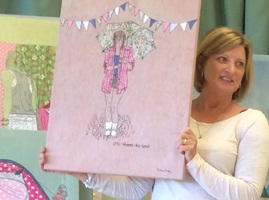 Caroline Kirton’s talk on Monday was entitled “Telling Tales” and after a while it became clear as to why she had chosen this title. As a mature student after the birth of her three daughters, Caroline enrolled on an Access to Art course which led to a Degree in Applied Arts. During the course she researched the feminist artist Mary Kelly and her work influenced Caroline. Using her family and their friends Caroline took a series of snapshots of teenagers which explored their emotions, their relationships, their thoughts and behind each picture there is a message and an appropriate title. It all started when her daughter’s boyfriend was taken back to the States without saying “good bye” and you can see exerts from an email and see the despair in the posture of the young lad called "Lewis" below. Many teenagers experience traumas in family life and as a result teenagers get a bad press so Caroline wanted to highlight the positive. "But I need it!", "You are ruining my life", "She is copying me" , "I think this will be OK for 6th form", "Just Chilling" and "My Mum's a proper weirdo" are amongst the chosen titles. As parents ourselves, many of us could relate to the topics which had been chosen. From a practical point Caroline takes photos which she then draws out and enlarges. She uses bondaweb to position vintage fabrics to the background and screen prints of text often taken from emails. She amazed us all by saying that she does not use a frame or hoop when free machining and always stretches the finished work herself.
Thank you Caroline for sharing your techniques with us and for giving us a most enjoyable afternoon. Report by Ros 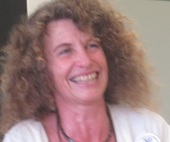 After our summer break we welcomed Isabelle Jourdan to speak about her great interest in spinning and weaving. It started when she and her husband were running an olive farm on the Greek island of Lesbos and she visited a shop exhibiting local weaving. Each Saturday for the next six months Isabelle attended a workshop and became totally enthralled with the craft. A lot of her inspiration has come from Kirsten Glasbrook who has written several books on tapestry weaving. Isabelle does not believe in conventional weaving methods but follows the simple approach using a basic wooden frame and not a loom - an old picture frame, an old window or door frames for large pieces. An embroidery needles to weave rather than a shuttle and she uses a knitting needle to knock the weft rather than the recognised tools. Isabelle used the expression "wild weaving" and in some of her work she does not start at the usual place, her weft threads do not necessarily go the width of the work and are often curved. Finishing adds an interesting dimension and she hangs her work on driftwood and uses a variety of wrapped tassels, beads and even feathers. As a result of her introduction to weaving the next step was to create her own yarns and Isabelle passed round a basket of raw wools and finished yarns from a variety of animals - merino, alpaca, Jacob, Jacob cross and goat. She does not sell her work, she teaches her techniques to encourage people to use their own ideas, colours and wools to make hangings, cards, brooches and bookmarks. Tomorrow, Isabelle will be leading a workshop entitled "Frame tapestry weaving for beginners" so we look forward to hearing about it and to seeing members' samples. Report by Ros L Lisa opened her talk by speaking about her 15 year background as a textile designer for the fashion industry, as well as teaching Sixth Form and University students. After completing an MA in Textiles in 2011 Lisa began concentrating on her own work and exhibiting with the Prism group of Textile Artists. Prior to 2010 her work mainly comprised of etching and print making, but Lisa then moved onto fine art. She experimented with metal leaf, acrylics, paper and cloth. At this time Lisa’s work was influenced by the sculptures of Barbara Hepworth, with a theme of the vulnerability of children and the environment, using digital printing, collage and etching on embroidered cloth. Lisa’s commission of The Nature of Mending project was inspired by the work of Anna Freud in relation to the children of the Kindertransport during WWII. During her research for this project, Lisa encountered many moving stories of some of those children who came to the UK and settled here. Some of the archived documents have been digitally printed onto cloth as part of Lisa’s installation for The Nature of Mending, showing how children who were “broken” by losing their families eventually were “mended”. Lisa concluded by telling us about the piece of Textile Art purchased by the Embroiderer’s Guild depicting poppies, which was inspired by the work of Paul Nash, a surrealist painter who became a war artist in WWII. All in all, Lisa was a very interesting and inspiring speaker.
Thank you Ann K for this report. Ros Magpie of the Mind Our inspirational speaker this month was Cas Holmes. Cas has a Fine Arts degree in painting and photography which she uses with good effect in her work which is also enriched by periods of long term study in Japan and India when she looked at uses of paper and textiles. Much of her inspiration comes from the her native Norfolk landscape which she sees as always merging and shifting and very importantly her Romany grandmother who used to say "Take me as I am so I may be what I become". Drawing what she sees in the landscape around her is also very important in giving Cas inspiration. To Cas her sketchbooks are vital, not only in giving her ideas for future work but as a reflective process to show her what will work. Cas describes herself as a "magpie" a collector, inquisitive, creative and acquiring things from the world around. This is seen in her work with 'found materials', textiles and mixed media which are torn, cut and reassembled to create translucent layers which Cas then links with stitching, often birds and flowers which she sees in the local landscape. Not only does Cas use old fabrics but even her sewing machine, a 730 Bernina, was rescued from a skip, repaired and put to good use in creating her work. One ongoing piece of work is 'Tea Flora Tales' which are pieces of work, half postcard size, which can be stitching on fabric, paper or mixed media which Cas will assemble into hanging strips. Details of this project are on Cas's blog and if any member wishes to make one of these then they should contact Deena Beverley. http://casholmes.blogspot.co.uk/ This was a very thought provoking talk encouraging us to look around at our surroundings for ideas, recycle materials we already have and to keep sketchbooks. Report by Christine H Thank you Christine! Ros Apart from when you are dyeing fabric, science is rarely mentioned alongside stitch and certainly one does not think of it when designing work but our speaker this month, Anne Griffiths opened our eyes to a different world. In 2007 Anne got involved with an amazing project at the Synchrotron based at Harwell Science and Innovation Campus in Oxfordshire. I had never heard of a Synchrotron so to enlighten readers I quote from the Diamond website: “Diamond Light Source is the UK’s synchrotron. It works like a giant microscope, harnessing the power of electrons to produce bright light that scientists can use to study anything from fossils to jet engines to viruses and vaccines.” Anne worked with members of the Women’s Institute, the Oxford Trust and the Diamond Light Source and used the Wellcome Trust library to translate images of diseases, scans and microscopic images into stitch. To ensure consistency of colour, the group spent a day dyeing and 80% of the panel had to use these fabrics. Anne showed us a variety of images of the finished work which is now displayed in that atrium at Harwell for all to enjoy. There was a royal opening at the end of the project when the Queen received a gift created by Anne Griffiths. Diamond wanted to continue its relationship with the arts and went on to create Artists in Residence positions. Anne applied and now works alongside metal sculptor, Paula Groves and painter, Sharon Wyper.
Thank you Anne for a very interesting talk. If you would like further information look on Anne's website: http://www.pocketmouse.co.uk Report by Ros 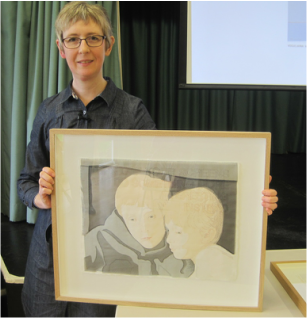 Emily Jo Gibbs started the New Year off with a fascinating talk about her work and techniques. She got her knowledge of sewing from her mother rather than from studying at school. Emily Jo followed a degree course in Wolverhampton which involved working with wood, metal and plastics and she learnt to solder silver. With the aid of a Prince’s Trust loan she set up her own business making unusual handbags using metals. She had a workshop in Clerkenwell and in time had a stand at the London Fashion week. Her business grew as she received orders for specific numbers of bags. In Emily Jo’s presentation she showed us images of the collections she created for each season which had to be on a specific theme and cover a range of prices. With the birth of her two sons and world events her business declined but several years later she changed direction and applied for a craft grant. She found it difficult not to describe herself as a bag maker as she explored new ideas. With the aid of a craft mentor Emily Jo created new work which was related to nature. 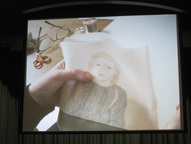 Another area she explored was embroidering photographic portraits which included text. Portraits of children have become very popular and she has exhibited her work extensively around the country. Examples of her work can be seen at the Victoria & Albert Museum, the Fine Arts Museum in Houston and there have been numerous articles in national and international publications over the years including Elle, Vogue, Embroidery, The Financial Times and Tatler. Emily Jo is a member of the 62 Group of Textile Artists. Thank you Emily Jo for a very enjoyable afternoon.
Reported by Ros Unfortunately our scheduled speaker, Meike Laurenson was not able to attend our November meeting so members were shown exerts from the Colouricious Talking Threads Christmas DVD. Textile Artist, Gilda Barron showed ideas for making Christmas cards and Ann Griffiths, who we hope will speak to us next year, demonstrated making a poinsettia flower using free machine embroidery. We enjoyed home-make cakes with our tea. Report by Ros Unusually for a textile artist Ruth did not study for a degree in textiles but Medieval History. Having been fascinated in fabrics since childhood Ruth took a special interest in medieval fashion, textiles and braids and on gaining her degree worked in various museums including the London Transport Museum and finally, her dream job, in the education department of the Victoria and Albert, always finding a connection with fabrics. In 2005 Ruth decided to set up her own studio and work with textiles full time. She worked with large panels, big pieces for exhibitions and galleries but in 2008 the recession brought this to an end so she took a year out and returned to museum work again. The work which followed "Criminal Quilts" is a collection of small pieces based on the hands in the photos which are clearly on view. Ruth tried to depict a story about the image, usually a woman, in the photo; using the hand shape which she printed on the fabric and then hand embroidered she used old fabrics, buttons lace etc with which she thought the woman might have been familiar to build up layers and finally quilted the piece. Ruth wanted the softness and comfort of quilting to contrast with the harshness of prison life and the multiple layers of fabric to suggest layers of narrative and history. Ruth uses several techniques, ones she thinks the women might have known themselves including reverse appliqué, cutting away, trapunto quilting and scrunching always on natural dyed, rusted or stained fabric to give an aged look. Some of Ruth's work will be displayed in a solo exhibition called 'Narrative Threads' in November in Sleaford, Lincolnshire and it may tour later. 'Court Hands' is on display in the museum in Stafford.
Thank you Ruth for giving us such an interesting and enjoyable talk showing how traditional techniques can be used in a most unusual way. Report by Christine H Photos by Vernice C Thank you Christine & Vernice! Ros Kirsty Whitlock was the speaker at our open meeting this month and her talk was entitled “My journey through stitch”. Her interest in stitch started when she followed an NVQ in Art & Design at school and then she went on to DeMontfort University. Encouraged by tutors there were many opportunities to experiment with a variety of techniques and paper became her favourite material. In an attempt to keep costs to a minimum she used found papers and experimented with various types of vinegar and rusting. An amusing project involved leaving paper in a cage with a gerbil to see its teeth marks in the paper. Kirsty left university with a first class honours degree and now uses current affairs for inspiration with recycled and discarded materials. In 2009 Kirsty was selected for the Graduate Showcase for the Embroiderers Guild and exhibited at Dublin and Harrogate. In 2012 she was awarded an Embroiderers’ Guild Scholarship and visited schools to talk about her work. On an Enterprise programme she was able to fund a Bernina sewing machine and got help with accommodation and setting up as self employed. Kirsty showed us a selection of her work explaining the story behind the projects, how she uses 3D and how the loose threads have now become her signature mark. The full size “Meltdown Misery” is a mixture of photography and stitch and was inspired by the falling stock market at the time of the recession. It is important to Kirsty to continue pushing the boundaries in all her work and encouraging young people by ensuring her skills are passed to the next generation. In addition to the talk members enjoyed cakes for tea, the “work in progress” table and a visit from embroidery supplier “Gillsew”.
Report by Ros |
AuthorInformation in this blog is provided by branch members who have attended the meeting, workshop or event. Categories
All
Archives
November 2016
|

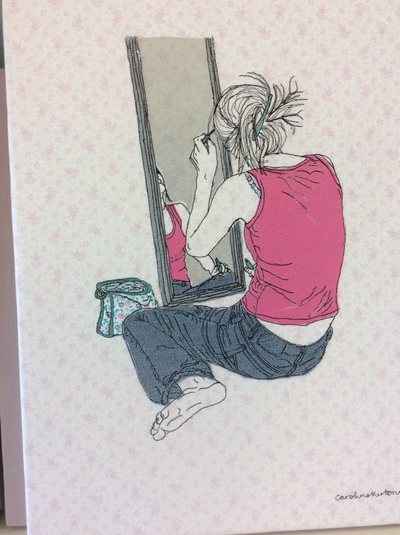
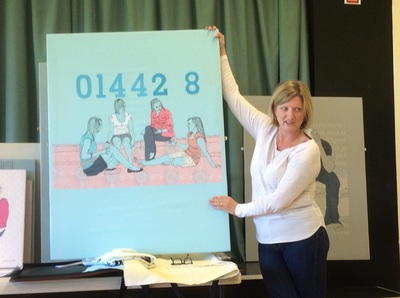
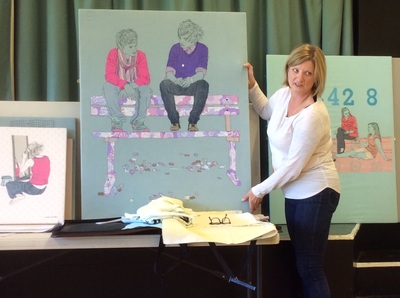

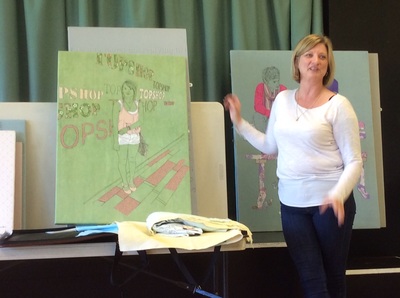
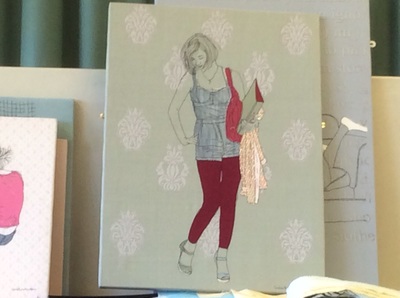
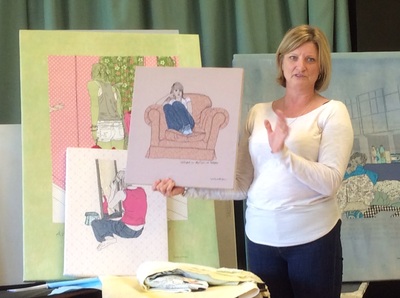
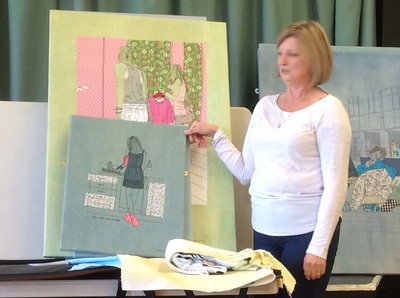
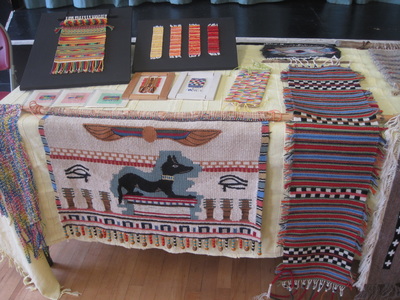




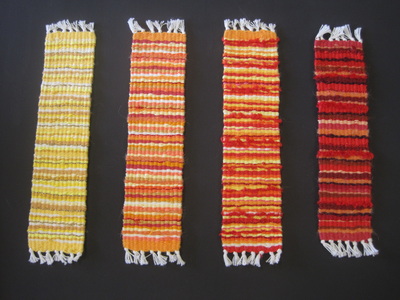

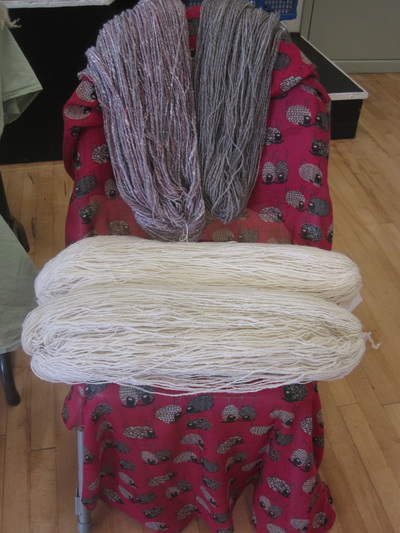
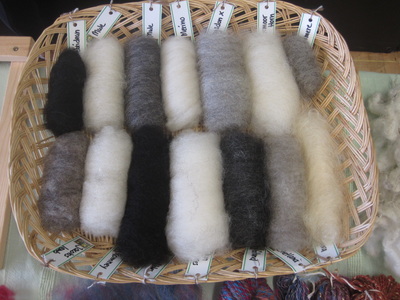
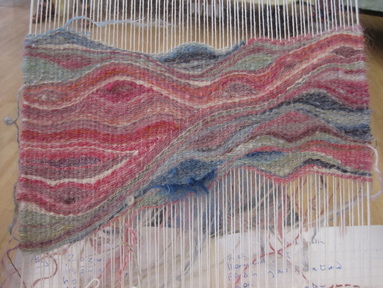
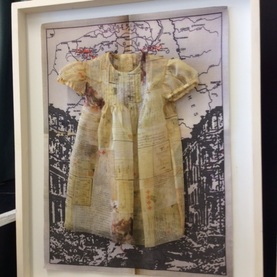
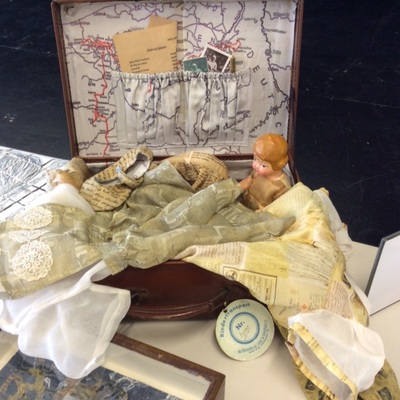
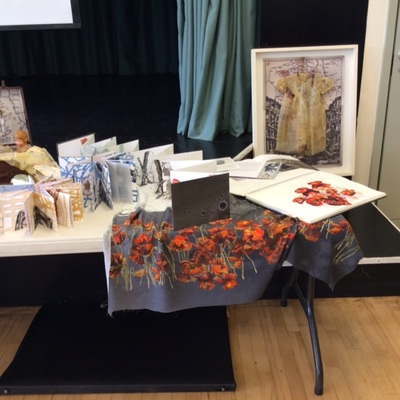
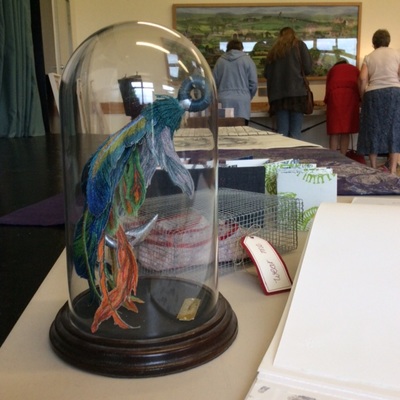
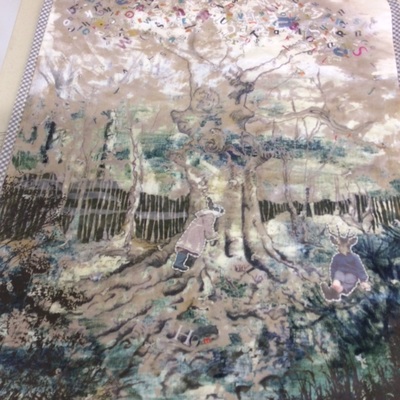
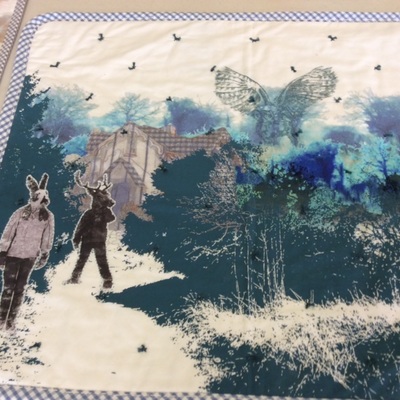
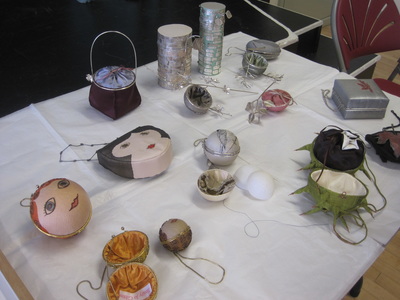
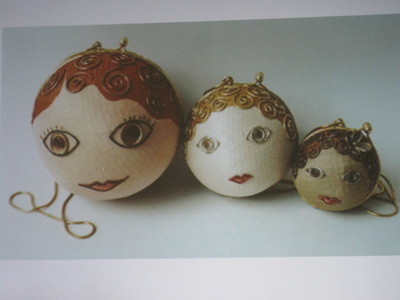


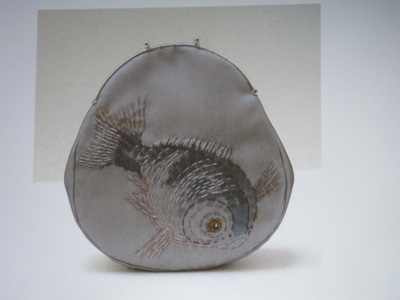
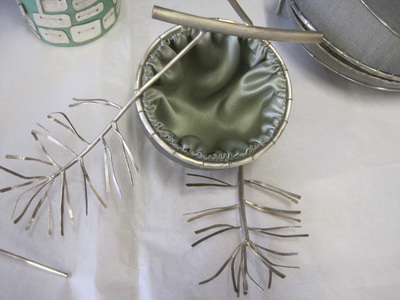
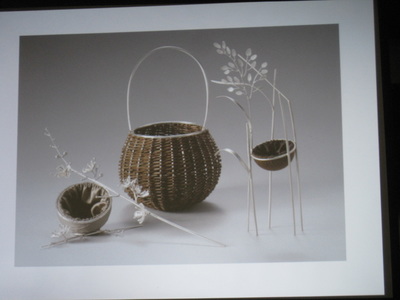
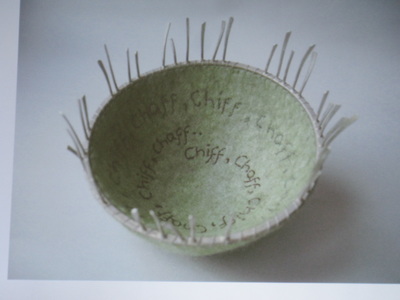
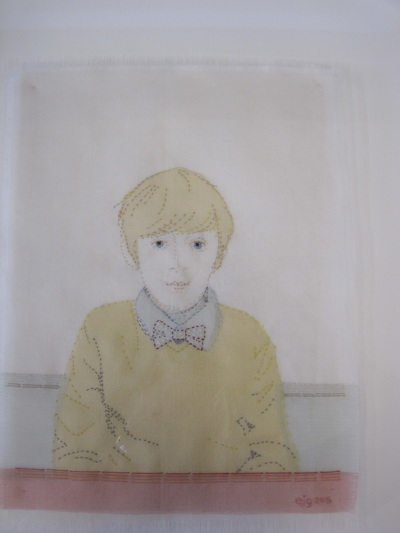
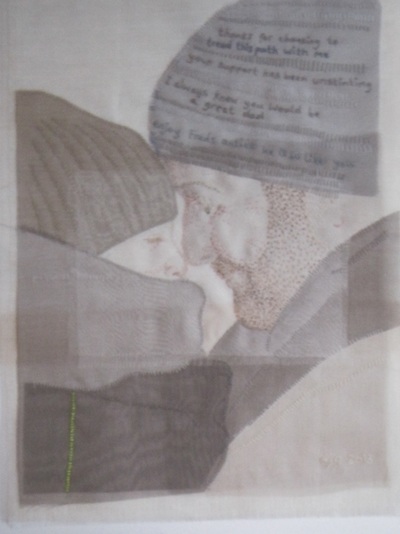

 RSS Feed
RSS Feed
